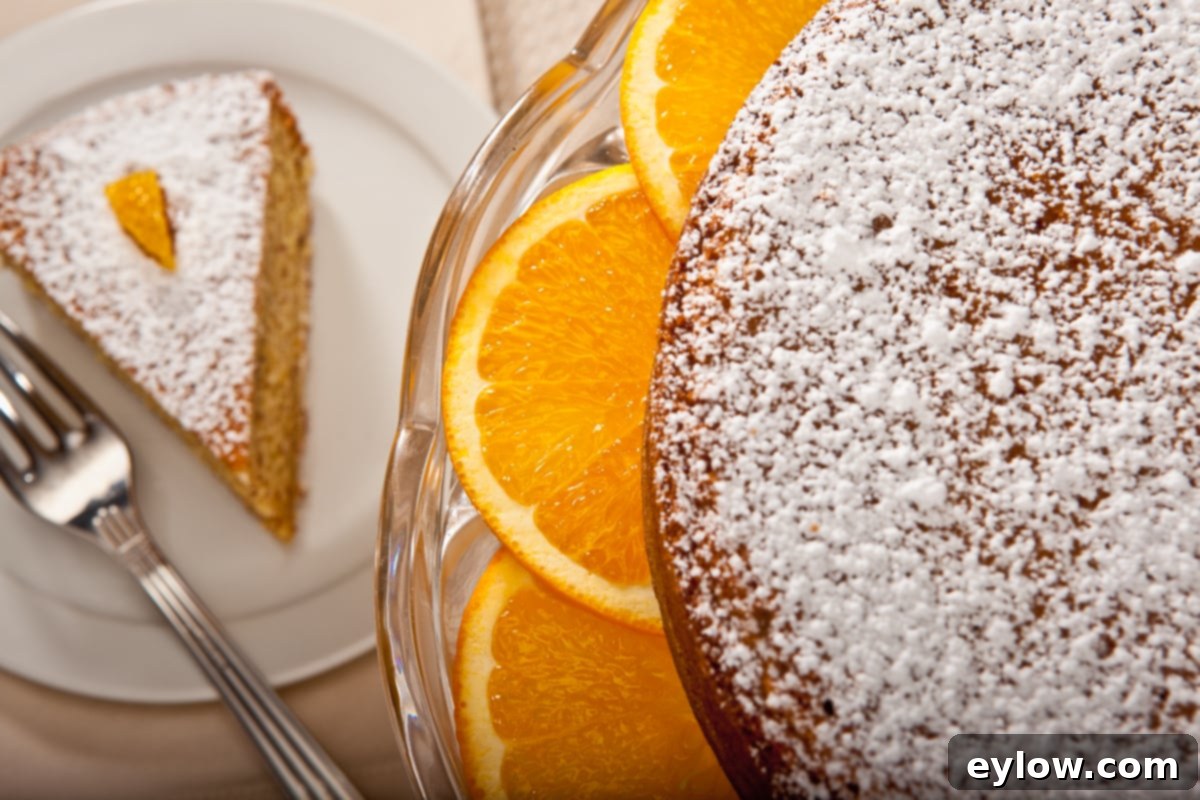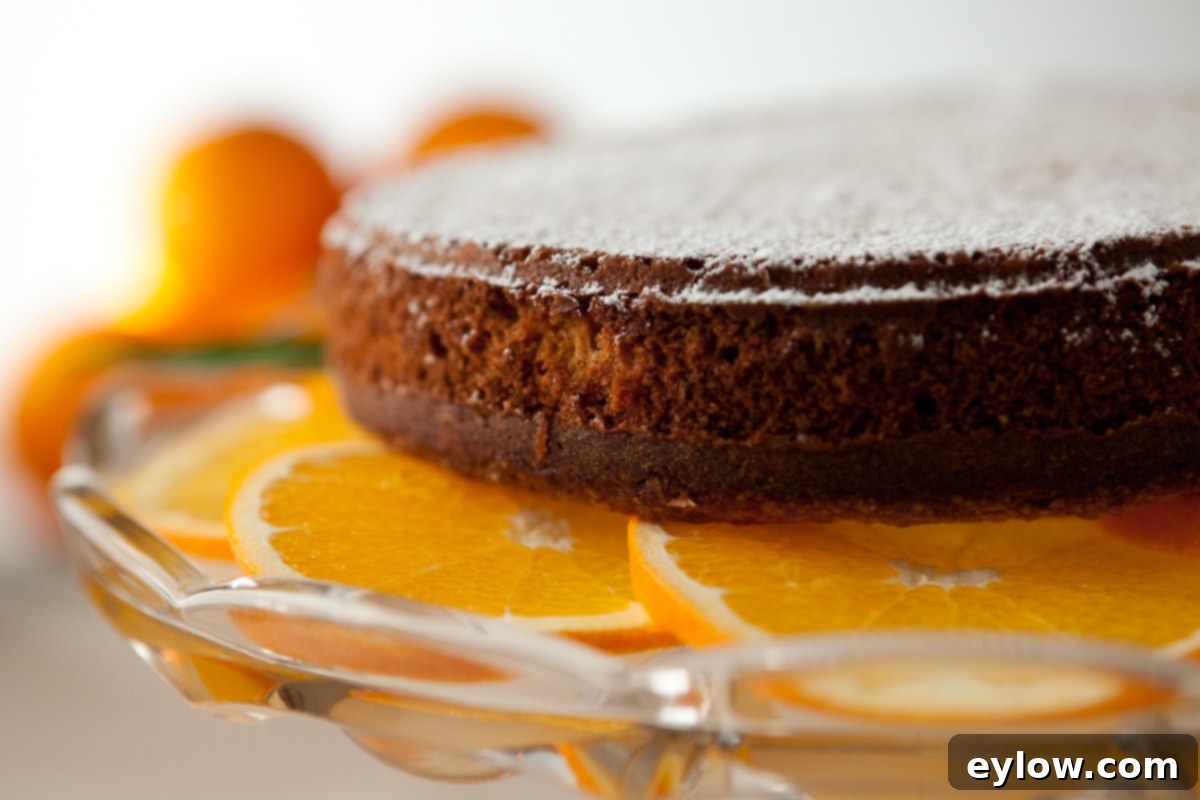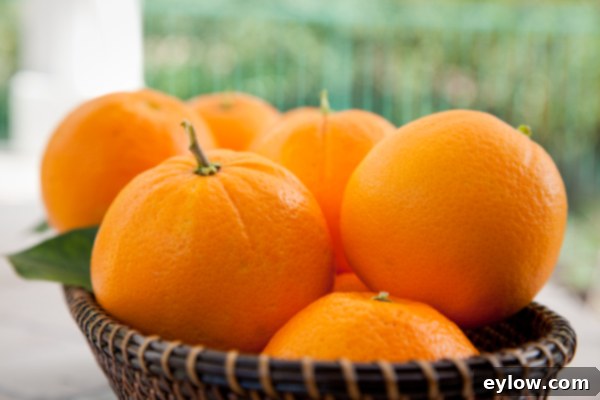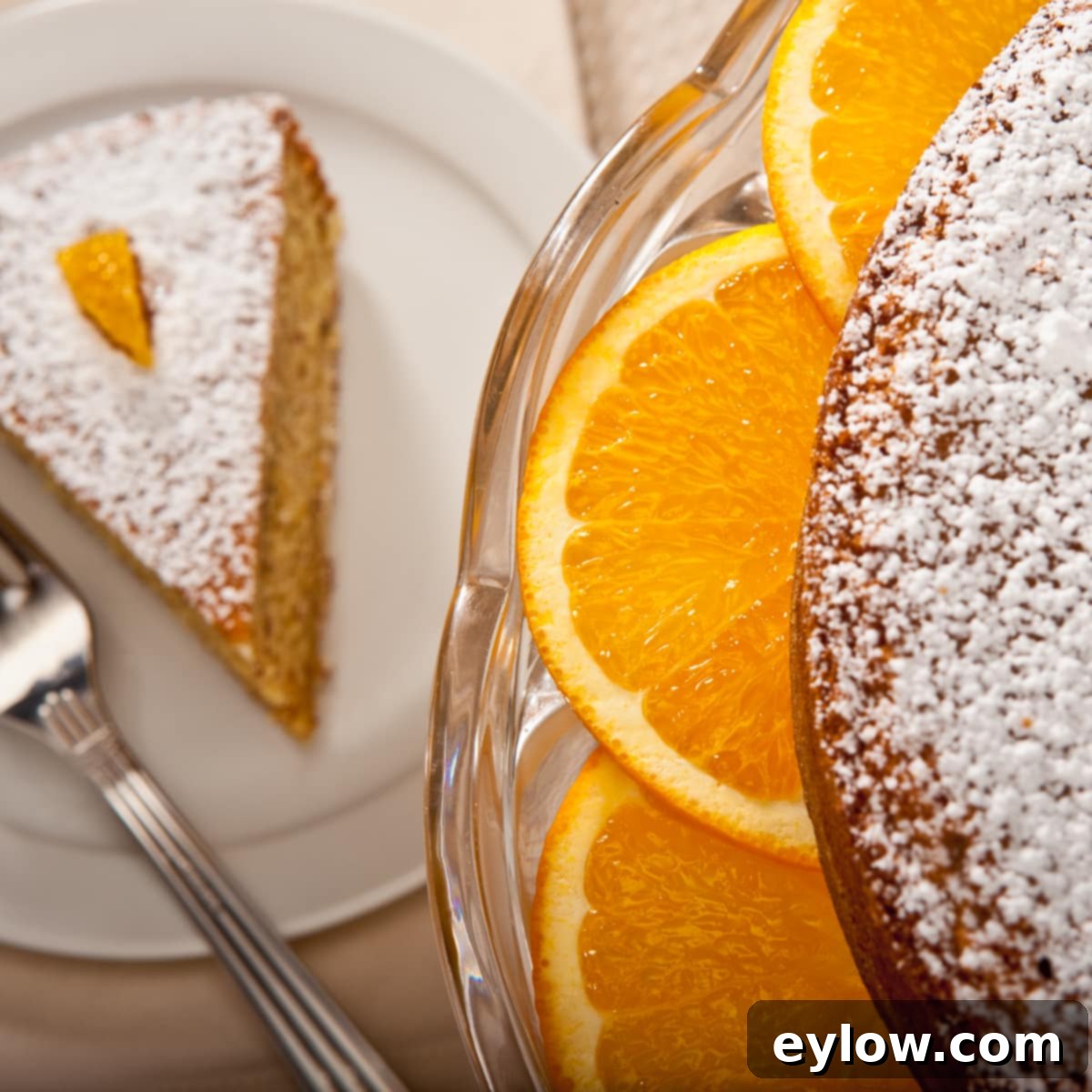Delightfully Moist & Gluten-Free Almond Flour Orange Cake: Your Perfect Winter Dessert
Discover the irresistible charm of this single-layer almond flour orange cake, a truly special treat that boasts a delicate orange flavor and a wonderfully tender, moist texture. This recipe stands out for its simplicity – you won’t need to boil any oranges, making the preparation straightforward and enjoyable. Forget heavy frostings; a light dusting of powdered sugar is all it takes to finish this elegant dessert, allowing the natural orange essence to shine. For those who desire a little extra indulgence, consider serving it with a dollop of homemade orange-flavored whipped cream or a dairy-free coconut cream, elevating the experience even further. And for ultimate convenience, this delightful cake can be prepared a day in advance, making it an ideal choice for entertaining or a thoughtful make-ahead gift.

In our modern culinary landscape, where convenience often reigns supreme, it’s easy to overlook that citrus fruits, with their vibrant colors and zesty aromas, are truly a gift of the winter season. The abundance of fresh navel oranges, especially during colder months, naturally inspires baking. This particular gluten-free almond flour orange cake recipe emerged from a cherished tradition of hosting friends who adore a sweet ending to their meals. It’s an adaptation of an old favorite, perfected over many years, now transformed into a fabulous gluten-free dessert that everyone can enjoy. Its inherent simplicity and the use of natural, wholesome ingredients make it a standout choice for any occasion, from casual family gatherings to more formal dinner parties. The delicate balance of almond and orange creates a sophisticated flavor profile that is both comforting and refreshing.

Why This Almond Flour Orange Cake is a Must-Try
This isn’t just another cake; it’s a celebration of simple flavors and a testament to delicious gluten-free baking. Here’s what makes this almond flour orange cake truly special:
- Effortless Elegance: A single-layer cake means less fuss and a rustic charm that needs no elaborate decoration.
- No Boiling Oranges: Many traditional orange cake recipes require boiling whole oranges for hours. This method skips that time-consuming step, relying instead on fresh zest and juice for vibrant flavor, saving you precious time in the kitchen.
- Gluten-Free Goodness: Using a blend of almond flour and a quality gluten-free flour ensures a tender crumb that’s surprisingly light and incredibly satisfying for those with gluten sensitivities or preferences.
- Naturally Moist: Almond flour contributes to an exceptionally moist cake, keeping it fresh for longer.
- Flavor Harmony: The combination of bright orange, nutty almond, and a hint of coriander creates a unique and unforgettable taste experience.
- Adaptable Sweetness: With options for sugar substitutes like stevia or monk fruit, you can easily adjust the sweetness to fit your dietary needs without sacrificing flavor.
Key Ingredients for Your Gluten-Free Almond Flour Orange Cake
Crafting this delicious cake starts with selecting the right ingredients. Each component plays a crucial role in achieving the perfect balance of flavor and texture. Pay attention to quality, as it truly makes a difference in the final product. Here’s a closer look at what you’ll need and some tips for success:
To reduce the sugar content without compromising sweetness, you have excellent options. You can use half natural organic sugar and half granular stevia, meaning you’d typically use 6 tablespoons of sugar and 3 tablespoons of granular stevia, as stevia is significantly sweeter. Another popular and effective option is a monk fruit blend, which can be substituted according to the package directions. When it comes to the gluten-free flour blend, a reputable brand like Bob’s Red Mill offers consistent quality. If you’re starting with whole almonds, I recommend grinding them yourself in a food processor for the freshest flavor and texture; however, high-quality, finely ground almond flour (also known as almond meal) works perfectly well as a convenient alternative.
For your shopping list, ensure you have these essentials:
- Raw Almonds: 6 ounces, ground. These provide the cake’s signature nutty flavor and contribute to its tender, moist texture. If you’re grinding your own, ensure they are finely processed to avoid a gritty texture.
- Unsalted Butter: Ensure it’s at room temperature for proper creaming with the sugar. Butter adds richness and helps create a light, airy crumb.
- Natural Granulated Sugar or Monk Fruit Blend: The choice of sweetener affects both taste and dietary profile. Adjust to your preference.
- Eggs: This recipe uses both whole eggs and separated yolks and whites. The egg yolks add richness and moisture, while whipped egg whites provide essential lift and a delicate structure to the cake. Ensure eggs are at room temperature.
- Gluten-Free Flour Blend: A good quality blend (like Bob’s Red Mill 1-to-1 Baking Flour) is crucial for a successful gluten-free bake. It ensures the cake holds together without being overly dense.
- Oranges for Zest and Juice: Fresh is best! The zest provides intense aromatic orange flavor, while the juice adds moisture and brightens the overall taste. Choose firm, blemish-free oranges.
- Ground Coriander: This might seem like an unusual addition, but coriander pairs beautifully with orange, adding a warm, slightly floral, and subtly spicy note that elevates the cake’s flavor profile. Don’t skip it!
- Sea Salt: A pinch of salt is vital to balance the sweetness and enhance all the other flavors in the cake.
Essential Tools for Baking Your Almond Orange Cake
Having the right kitchen tools can make the baking process smoother and more enjoyable, especially when working with delicate batters like this almond flour orange cake. Here’s a detailed look at the equipment you’ll need:
Hand Mixer: This recipe yields a single-layer cake, meaning the batter volume is smaller than that of a traditional double-layer cake. A hand mixer is perfectly adequate for this task, efficiently creaming butter and sugar, and beating eggs and egg whites to their desired consistency. While a stand mixer can certainly be used, a hand mixer is often more convenient for smaller batches and easier to clean. It provides excellent control for incorporating ingredients gently.
Springform Pan: An 8-inch springform pan is essential for this recipe. These pans are a fantastic addition to any baker’s collection because their unique design allows for effortless cake release. Once your cake is baked and cooled, simply unclip the spring mechanism, and the sides of the pan expand, allowing you to lift the cake away cleanly without inversion or damage. Look for one that seals tightly at the bottom to prevent any batter leakage during baking. You can find quality springform pans at specialty cooking stores, department stores like Bed Bath and Beyond, or conveniently online through retailers like Amazon.
Parchment Paper: This baking essential prevents sticking and ensures your cake comes out perfectly every time. You can purchase baking parchment paper in most grocery stores, typically found in the aisle alongside aluminum foil and plastic wrap. This often comes in rolls of a heavier style. Alternatively, you can find pre-cut rounds and sheets of lighter weight parchment paper at cooking stores or online, which can save you time. Either type will work wonderfully for this recipe. Cutting a circle to fit the bottom of your springform pan before buttering and flouring guarantees easy removal.
Fine Sieve: A small, fine-mesh sieve is indispensable for elegantly dusting your finished cake with powdered sugar. To use, simply place a spoonful or two of powdered sugar into the sieve and gently shake or tap it against the side of your hand. This technique creates a beautiful, even, cloud-like coating over the cake, adding a touch of sophistication without heavy frosting. It’s also useful for sifting dry ingredients to remove lumps and ensure a smooth batter.

Tips for Baking Success
Achieving a perfectly moist and flavorful gluten-free orange almond cake is all about paying attention to a few key details. Here are some pro tips to help you:
- Room Temperature Ingredients: Ensure your butter and eggs are at room temperature. This allows them to cream together properly, incorporating air and creating a smoother, more emulsified batter, which leads to a lighter cake.
- Grinding Almonds: If you’re using raw almonds, grind them very finely in a food processor. Over-grinding can release too much oil, turning them into butter, so pulse in short bursts until a fine, flour-like consistency is achieved.
- Zest First, Then Juice: Always zest your oranges before you juice them. It’s much easier to zest a whole, firm orange than a juiced one.
- Folding Egg Whites: The key to a light cake is the gently folded egg whites. Beat them until they hold stiff peaks – when you turn your beaters upside down, the peak should stand straight up. Then, incorporate them into the batter in two additions using a flexible spatula, cutting down the middle and folding over, rather than stirring vigorously. This preserves the air you’ve beaten in.
- Doneness Test: Ovens vary, so start checking your cake a few minutes before the recommended bake time. A toothpick or cake tester inserted into the center should come out clean, without any wet batter attached. If it’s not quite done, give it a few more minutes.
- Cooling: Allow the cake to cool in the pan on a wire rack for a while before releasing the springform. This prevents it from cracking or sinking, allowing it to set properly.
Serving and Storage Suggestions
Once your exquisite almond flour orange cake is baked and cooled, it’s ready to be enjoyed! While a simple dusting of powdered sugar is classic and elegant, feel free to get creative with your garnishes. A few thin slices of fresh orange or candied orange peel can add a beautiful visual and an extra burst of citrus flavor. For a richer experience, a dollop of freshly whipped cream, perhaps infused with a little orange zest, or a dairy-free coconut cream would be delightful. This cake also pairs wonderfully with fresh berries like raspberries or blueberries, adding a tart contrast.
To store your cake and maintain its freshness, place it in an airtight container at room temperature for up to 2-3 days. For longer storage, you can refrigerate it for up to 5 days. If you wish to make it even further ahead, this cake freezes beautifully. Wrap cooled cake slices tightly in plastic wrap, then again in aluminum foil, and freeze for up to 2-3 months. Thaw overnight in the refrigerator before serving, and bring to room temperature for the best flavor and texture.
📖 Recipe

Almond Flour Orange Cake (Gluten-Free)
Sally Cameron
Pin Recipe
Equipment
-
8″ springform pan
-
Baking parchment
-
Food processor (to grind almonds) or use almond meal
Ingredients
- 1 cup raw almonds (6 ounces) or almond meal
- ½ cup + 1 T unsalted butter at room temperature
- ¾ cup monk fruit blend or natural granulated sugar
- 1 large egg
- 2 large egg yolks
- ½ cup + 1 T gluten-free flour blend
- 2 tablespoons orange juice fresh squeezed
- 1 tablespoon orange zest
- ½ teaspoon ground coriander
- 1 pinch sea salt
- 2 large egg whites at room temperature
Optional Garnish
- Powdered sugar for top of cake
Instructions
-
Preheat your oven to a precise 375°F (190°C). Carefully butter an 8-inch springform pan, ensuring an even coating on the bottom and sides. To guarantee easy removal, cut a circle of baking parchment paper to perfectly fit the bottom of the pan (or use a convenient pre-cut parchment round). Press the parchment into the buttered bottom, then lightly butter the parchment itself and dust with a small amount of gluten-free flour, tapping out any excess. This preparation is key for a flawless release.
-
In a large mixing bowl, using your hand mixer (or stand mixer), beat the ½ cup of room temperature unsalted butter until it is light and fluffy, usually taking about 1-2 minutes. Gradually add the sugar (or monk fruit/stevia blend) to the butter, continuing to beat until the mixture is well blended, pale, and creamy. This creaming process incorporates air, essential for a tender cake. Next, add the whole large egg, beating well until fully incorporated. Follow with the two large egg yolks, adding them one at a time and beating thoroughly after each addition to ensure everything is smoothly combined. Finally, with the mixer on low speed, gently beat in the ground almonds, gluten-free flour blend, fresh orange juice, vibrant orange zest, fragrant ground coriander, and a pinch of sea salt. Remember to stop occasionally and scrape down the sides of the bowl with a spatula to ensure all ingredients are evenly mixed and no pockets of unmixed ingredients remain.
-
Using clean, dry beaters (any grease can prevent whites from stiffening), beat the two large egg whites in a separate medium-sized bowl until they form stiff peaks. Stiff peaks are achieved when you can turn your beaters upside down, and the whites hold their shape, standing straight up without drooping. Be careful not to overbeat, which can make them dry and crumbly. With a flexible spatula, gently fold the whipped egg whites into the cake batter in two additions. The key here is a light hand – use a motion that cuts down through the middle and folds the batter over the whites, preserving as much air as possible to keep the cake light and airy. Transfer the delicate batter evenly into your meticulously prepared springform pan.
-
Bake the cake in your preheated oven for approximately 35-40 minutes, or until the top is beautifully golden brown and a wooden toothpick or cake tester inserted into the center comes out completely clean. Because oven temperatures can vary, it’s always a good idea to check for doneness a few minutes earlier than the suggested time. Once baked, remove the cake from the oven and allow it to cool completely in the springform pan, placed on a wire rack. This gradual cooling helps the cake set properly and prevents it from sinking. Once fully cooled, carefully release the spring mechanism and remove the cake from the pan, revealing your perfectly baked gluten-free almond flour orange cake.
Notes
This cherished recipe has been lovingly adapted over many years from an old, timeless issue of Bon Appetit, a testament to its enduring appeal and classic flavor profile.
